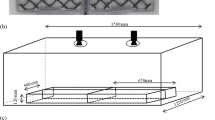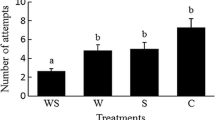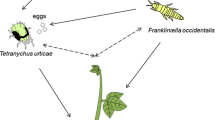Abstract
Animals that forage in groups can produce their own food patches or scrounge the food discoveries of their companions. Mean tactic payoffs are expected to be the same at equilibrium for phenotypically equal foragers. Scrounging is also typically viewed as a risk-averse foraging strategy that provides a more even food intake rate over time. The occurrence of scrounging and the payoffs from different foraging modes have rarely been investigated in the field. Over two field seasons, I examined patch sharing in semipalmated sandpipers (Calidris pusilla) foraging on minute food items at the surface of the substrate. Birds could find patches on their own, a producing event, or join the food patches discovered by others, a scrounging event. I found that the average search time per patch did not differ between producing and scrounging but that the average time spent exploiting a patch was reduced nearly by half when scrounging. As a result, the proportion of time spent exploiting a patch, a measure of foraging payoffs, was significantly lower when scrounging. The variance in payoffs was similar for producing and scrounging. When producing their own patches, individuals that scrounged spent the same proportion of time exploiting a patch as those that only produced. However, within the same individuals, the search time for a scrounged patch was longer than the search time for a produced patch. The results show unequal payoffs for producing and scrounging in this system and suggest that low success in finding patches elicited scrounging.



Similar content being viewed by others
References
Barnard CJ, Sibly RM (1981) Producers and scroungers: a general model and its application to captive flocks of house sparrows. Anim Behav 29:543–550
Barta Z, Giraldeau L-A (1998) The effect of dominance hierarchy on the use of alternative foraging tactics: a phenotype-limited producing-scrounging game. Behav Ecol Sociobiol 42:217–223
Beauchamp G (2006) Phenotypic correlates of scrounging behavior in zebra finches: role of foraging efficiency and dominance. Ethology 112:873–878
Beauchamp G (2013) Social foragers select a riskier foraging mode in the centre of their groups. Biol Lett 9:20130528
Beauchamp G (2014) Social predation: how group living benefits predators and prey. Academic Press, New York
Bugnyar T, Kotrschal K (2002) Scrounging tactics in free-ranging ravens, Corvus corax. Ethology 108:993–1009
Caraco T, Giraldeau L-A (1991) Social foraging: producing and scrounging in a stochastic environment. J Theor Biol 153:559–583
Coolen I (2002) Increasing foraging group size increases scrounger use and reduces searching efficiency in nutmeg mannikins (Lonchura punctulata). Behav Ecol Sociobiol 52:232–238
Coolen I, Giraldeau LA (2003) Incompatibility between antipredatory vigilance and scrounger tactic in nutmeg mannikins, Lonchura punctulata. Anim Behav 66:657–664
David M, Giraldeau LA (2012) Zebra finches in poor condition produce more and consume more food in a producer-scrounger game. Behav Ecol 23:174–180
Flower TP, Child MF, Ridley AR (2013) The ecological economics of kleptoparasitism: pay-offs from self-foraging versus kleptoparasitism. J Anim Ecol 82:245–255
Gross MR (1996) Alternative reproductive strategies and tactics: diversity within sexes. Trends Ecol Evol 11:92–98
Held SDE, Byrne RW, Jones S, Murphy E, Friel M, Mendl MT (2010) Domestic pigs, Sus scrofa, adjust their foraging behaviour to whom they are foraging with. Anim Behav 79:857–862
Iyengar EV (2004) Host-specific performance and host use in the kleptoparasitic marine snail Trichotropis cancellata. Oecologia 138:628–639
Jolles JW, Ostojic L, Clayton NS (2013) Dominance, pair bonds and boldness determine social-foraging tactics in rooks, Corvus frugilegus. Anim Behav 85:1261–1269
Katsnelson E, Motro U, Feldman MW, Lotem A (2011) Individual-learning ability predicts social-foraging strategy in house sparrows. Proc R Soc Lond B 278:582–589
King AJ, Isaac NJB, Cowlishaw G (2009) Ecological, social, and reproductive factors shape producer-scrounger dynamics in baboons. Behav Ecol 20:1039–1049
Kurvers RHJM, Prins HHT, van Wieren SE, van Oers K, Nolet BA, Ydenberg RC (2010) The effect of personality on social foraging: shy barnacle geese scrounge more. Proc R Soc Lond B 277:601–608
Kuwae T, Miyoshi E, Hosokawa S, Ichimi K, Hosoya J, Amano T, Moriya T, Kondoh M, Ydenberg RC, Elner RW (2012) Variable and complex food web structures revealed by exploring missing trophic links between birds and biofilm. Ecol Lett 15:347–356
Lendvai AZ, Barta Z, Liker A, Bokony V (2004) The effect of energy reserves on social foraging: hungry sparrows scrounge more. Proc R Soc Lond B 271:2467–2472
Lendvai AZ, Liker A, Barta Z (2006) The effects of energy reserves and dominance on the use of social-foraging strategies in the house sparrow. Anim Behav 72:747–752
Liker A, Barta Z (2002) The effects of dominance on social foraging tactic use in house sparrows. Behaviour 139:1061–1076
MacDonald EC, Ginn MG, Hamilton DJ (2012) Variability in foraging behavior and implications for diet breadth among semipalmated sandpipers staging in the upper Bay of Fundy. Condor 114:135–144
Mathot KJ, Giraldeau L-A (2010) Within-group relatedness can lead to higher levels of exploitation: a model and empirical test. Behav Ecol 21:843–850
McCormack JE, Jablonski PG, Brown JL (2007) Producer-scrounger roles and joining based on dominance in a free-living group of Mexican jays (Aphelocoma ultramarina). Behaviour 144:967–982
McCrate AT, Uetz GW (2010) Kleptoparasites: a twofold cost of group living for the colonial spider, Metepeira incrassata (Araneae, Araneidae). Behav Ecol Sociobiol 64:389–399
Morand-Ferron J, Giraldeau L-A, Lefebvre L (2007) Wild Carib grackles play a producer scrounger game. Behav Ecol 18:916–921
Ranta E, Peuhkuri N, Hirvonen H, Barnard CJ (1998) Producers, scroungers and the price of a free meal. Anim Behav 55:737–744
Rutten AL, Oosterbeek K, van der Meer J, Verhulst S, Ens BJ (2010) Experimental evidence for interference competition in oystercatchers, Haematopus ostralegus. I. Captive birds. Behav Ecol 21:1251–1260
Sirot E, Maes P, Gelinaud G (2012) Movements and conflicts in a flock of foraging black-tailed godwits (Limosa limosa): the influence of feeding rates on behavioural decisions. Ethology 118:127–134
Stahl J, Tolsma PH, Loonen MJJE, Drent RH (2001) Subordinates explore but dominants profit: resource competition in high Arctic barnacle goose flocks. Anim Behav 61:257–264
Toth Z, Bokony V, Lendvai AZ, Szabo K, Penzes Z, Liker A (2009) Effects of relatedness on social-foraging tactic use in house sparrows. Anim Behav 77:337–342
Vickery WL, Giraldeau L-A, Templeton JJ, Kramer DL, Chapman CA (1991) Producers, scroungers and group foraging. Am Nat 137:847–863
Acknowledgments
I thank Peter Bednekoff and two anonymous reviewers for their insightful comments, which helped me to improve the paper.
Ethical standards
This observational study complies with the current laws in Canada. This study received no external funding.
Conflict of interest
I declare that I have no conflict of interest.
Author information
Authors and Affiliations
Corresponding author
Additional information
Communicated by P. A. Bednekoff
Electronic supplementary material
Below is the link to the electronic supplementary material.
Online Resource 1
(DOCX 14 kb)
Online Resource 2
(DOCX 14 kb)
Rights and permissions
About this article
Cite this article
Beauchamp, G. A field investigation of scrounging in semipalmated sandpipers. Behav Ecol Sociobiol 68, 1473–1479 (2014). https://doi.org/10.1007/s00265-014-1755-2
Received:
Revised:
Accepted:
Published:
Issue Date:
DOI: https://doi.org/10.1007/s00265-014-1755-2




